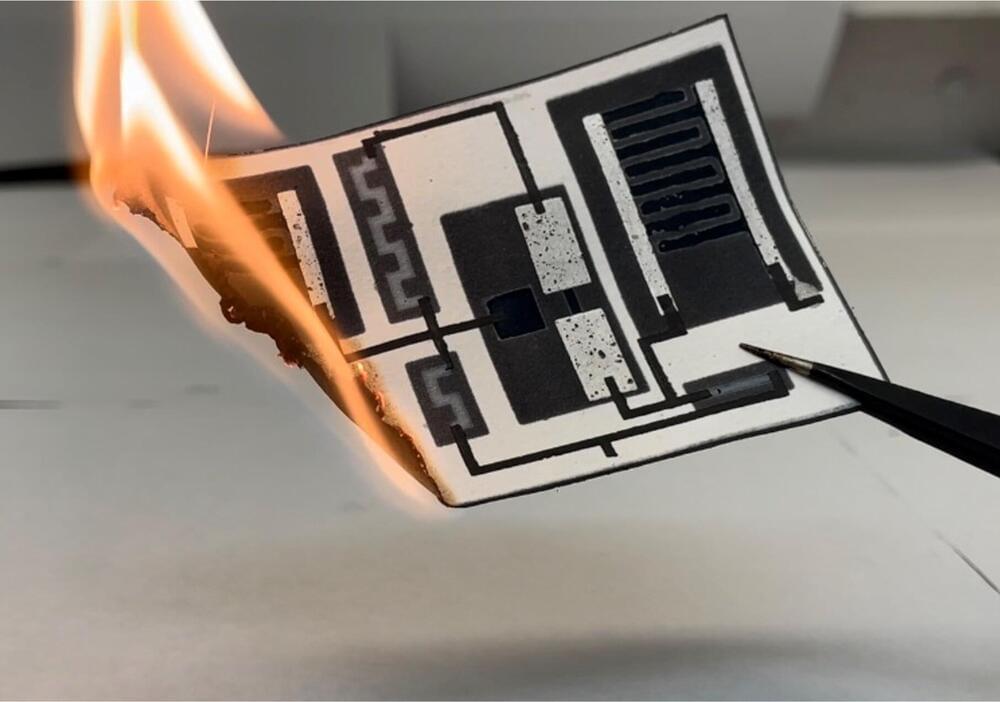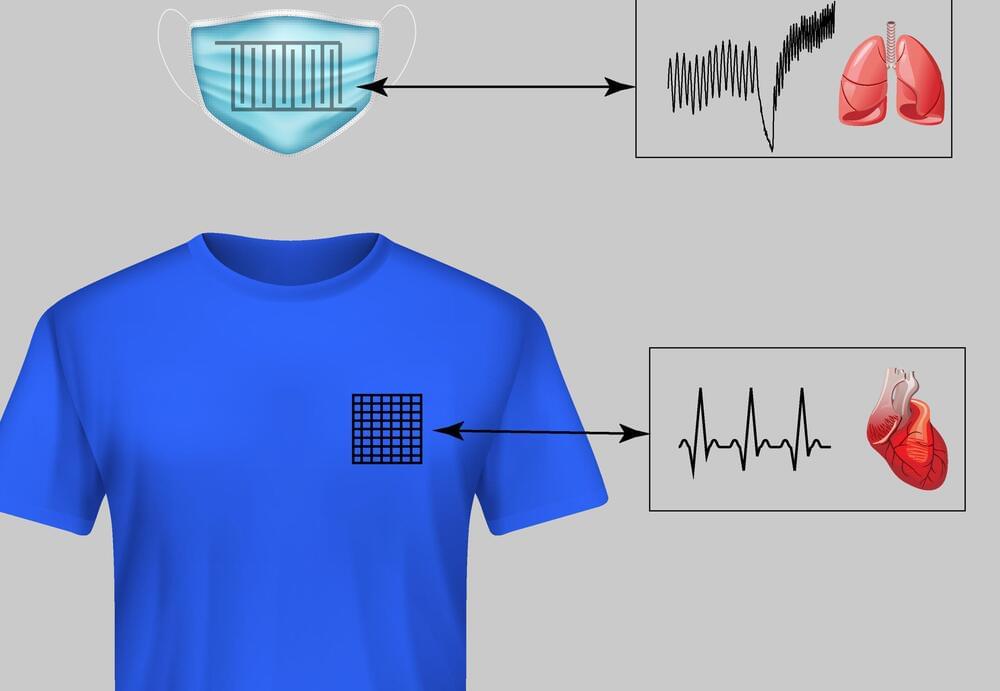Oct 6, 2022
Disposable electronics on a simple sheet of paper
Posted by Jose Ruben Rodriguez Fuentes in categories: biotech/medical, mobile phones, wearables
Discarded electronic devices, such as cell phones, are a fast-growing source of waste. One way to mitigate the problem could be to use components that are made with renewable resources and that are easy to dispose of responsibly. Now, researchers reporting in ACS Applied Materials & Interfaces have created a prototype circuit board that is made of a sheet paper with fully integrated electrical components, and that can be burned or left to degrade.
Most small electronic devices contain circuit boards that are made from glass fibers, resins and metal wiring. These boards are not easy to recycle and are relatively bulky, making them undesirable for use in point-of-care medical devices, environmental monitors or personal wearable devices.
One alternative is to use paper-based circuit boards, which should be easier to dispose of, less expensive and more flexible. However, current options require specialized paper, or they simply have traditional metal circuitry components mounted onto a sheet of paper. Instead, Choi and colleagues wanted to develop circuitry that would be simple to manufacture and that had all the electronic components fully integrated into the sheet.


















